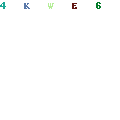
A camera is nothing more than a light-tight box with a hole (aperture) and a cover (shutter) for that hole. The correct amount of light must enter the camera to form a properly exposed picture. Aperture size and shutter speed are critical in measuring that amount of light.

The shutter can be opened at varying fractions of a second to whole seconds. The longer you leave the shutter open, the more time for light to enter the camera, the more prone for blur to appear in the picture. It is ideal to use the shortest possible time to attain very sharp pictures. Slow shutter times can be used for artistic shots like flowing water, star trails, purposely blurred action like in sports and making fake ghosts.
The other way of controlling the amount of light that enters the camera is the size of the aperture which is denoted by f/numbers. The smaller the f/number, the larger the aperture, the more light is allowed to enter the camera at once, the faster you can set the shutter speed of the camera. It becomes obvious now that large aperture lenses are the ideal ones to use in low light photography. Large apertures also have the benefit of providing shallow depth of field which is great for blurring the background. Small aperture sizes (large f/numbers) are great for more depth of field like when taking group shots, landscapes and sunsets (for underexposing intentionally).
Now you know!
Keerok

No comments:
Post a Comment